Fall 2018
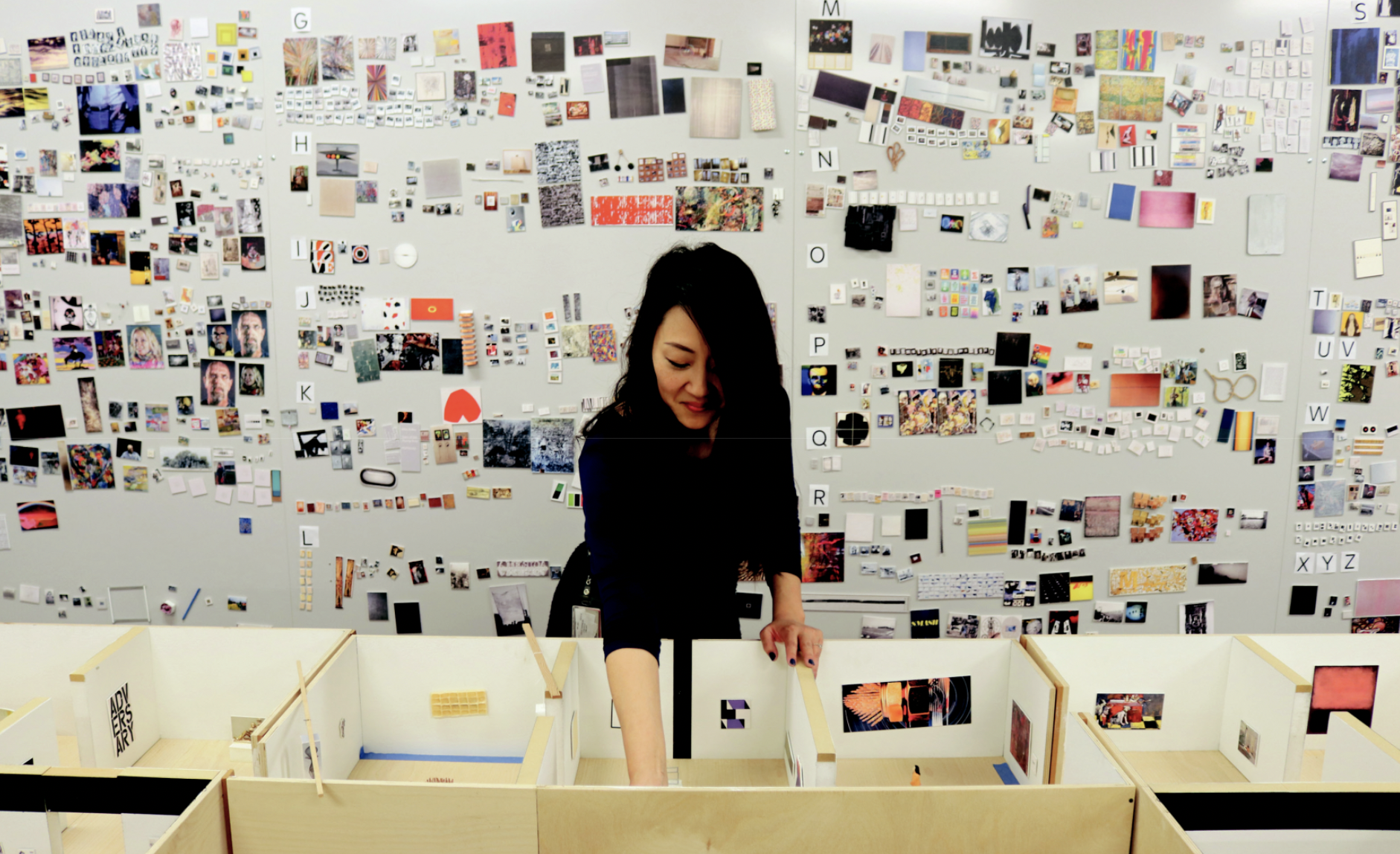
Sarah Choi places maquettes in the miniature museum. Photo: Adrian Martinez for SFMOMA
Exhibition design is a unique, intricate process that by its nature should be invisible. But creating a seamless exhibition experience takes months, sometimes years, of meticulous planning and preparation by many teams around SFMOMA.
A key part of that work takes place in the Model Room, an expansive workshop at the end of a labyrinth of hallways. It contains a scaled replica of each floor and section of the museum’s exhibit spaces and the artworks within. These floor models are spread across ten large tables, each set up with miniature artworks for current or upcoming exhibitions. With a ratio of one-half inch to one foot, Eva Hesse’s seven-foot wide Sans II and Mark Rothko’s massive nine-foot tall No. 14, 1960 could easily rest on the palm of your hand. The Model Room is a mini-SFMOMA, and it is where an exhibition starts to come to life.
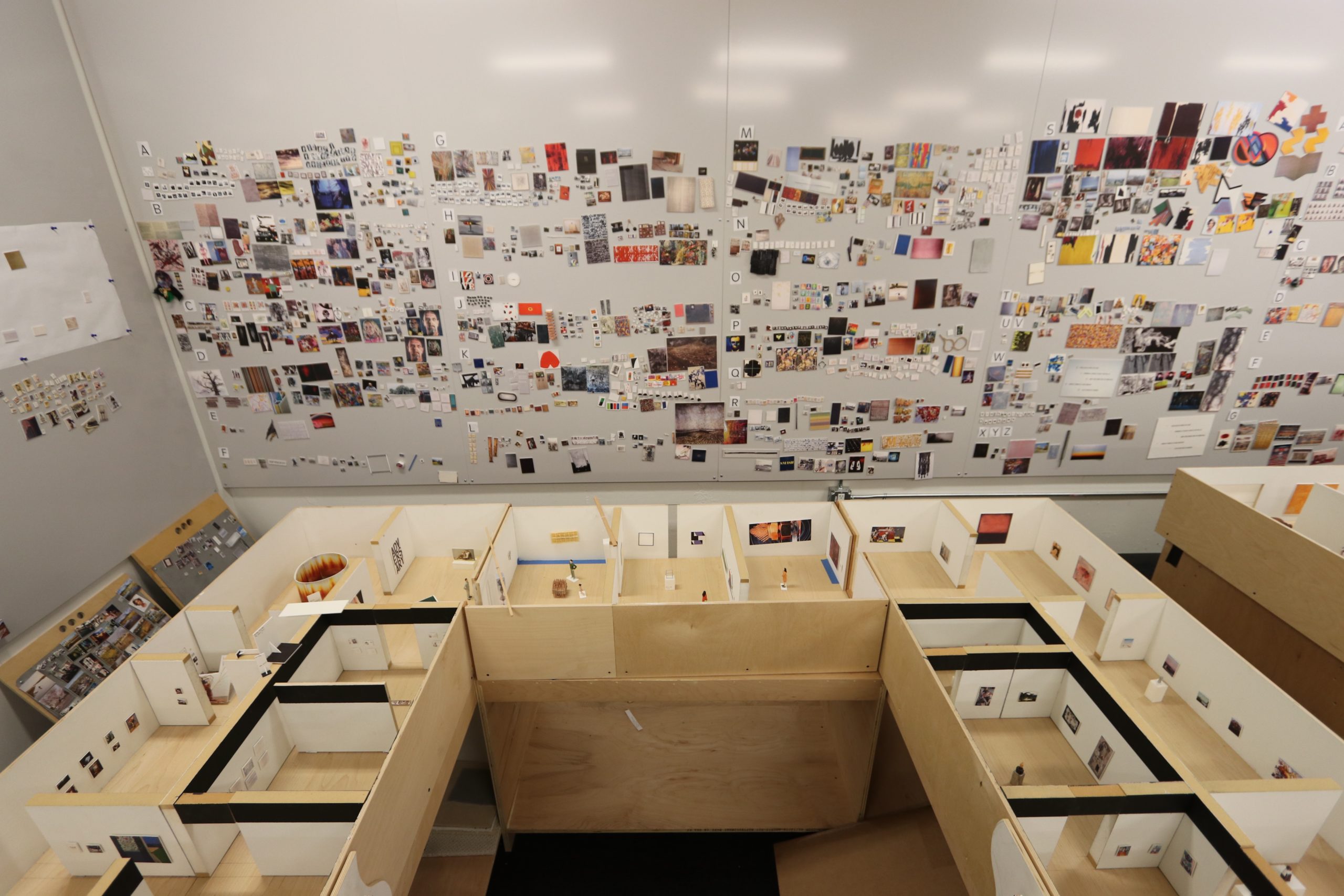
Photo: Adrian Martinez for SFMOMA
Kent Roberts, who was SFMOMA’s exhibitions design manager for 39 years, built the most recent floor models with his team before the museum’s 2016 re-opening so that curators could plan and create their exhibitions. “One of our priorities is to work with the curators or artists, to talk with them about their vision for the show and to help them fit it in the gallery,” he explains. Janet Bishop, Thomas Weisel Family Chief Curator and Curator of Painting and Sculpture, elaborates: “The models really allow us to absorb the relative dimensions of the objects, and how they might work in relationship to each other and to the space.”
Sarah Choi, exhibitions design coordinator, enlivens these floor models by creating maquettes — small versions of the actual artworks — that curators can then place and move around inside the models. Using photos and artwork dimensions as a reference, Choi carefully pieces together individual works such as Louise Bourgeois’s spider sculptures, with a level of detail that consistently amazes her colleagues. “I try to make them look as close to the artwork as possible, even if it might not be the same medium,” explains Choi. For her, it’s about getting the scope and perspective just right. “I used to just crumple up a piece of paper and say, ‘This is a spider, okay?’” Roberts comments, smiling. “So when curators see detail on Sarah’s maquettes, it’s simply better.”
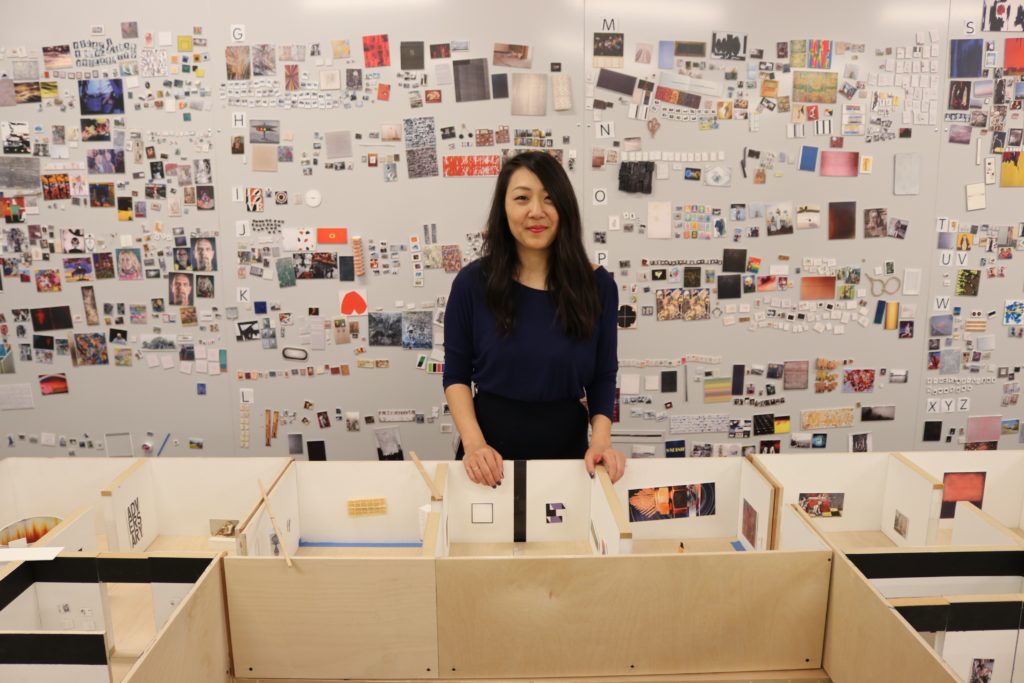
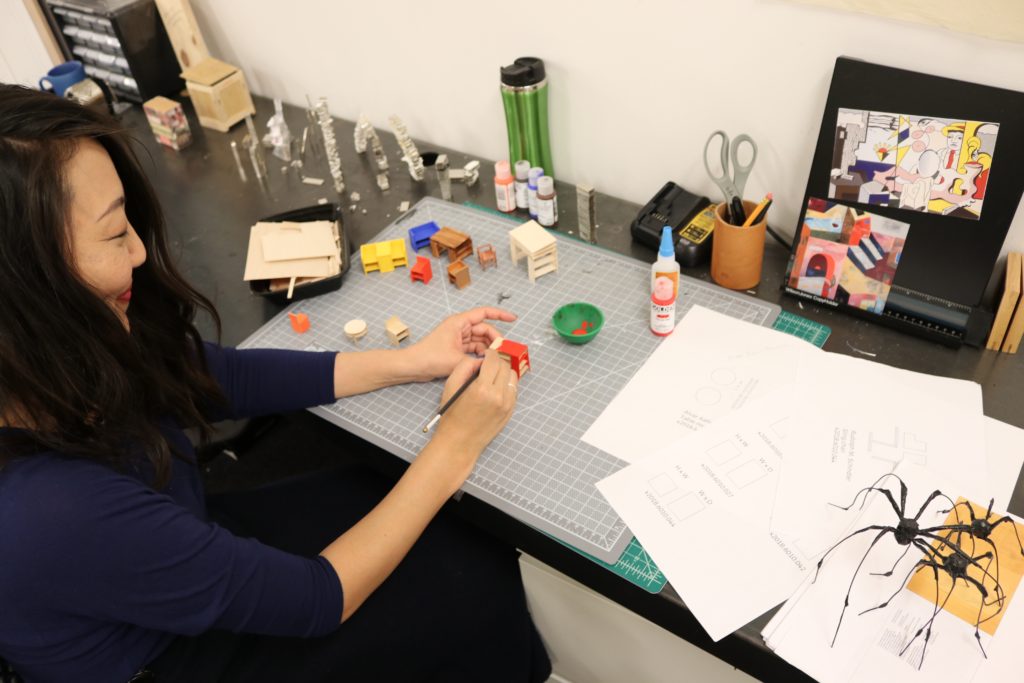


Sarah Choi makes maquettes for the miniature museum. Photo: Adrian Martinez for SFMOMA
Choi learned to make maquettes during her internship in exhibition design at SFMOMA. “It came naturally to me,” she says, recalling the first maquettes she made, for a Richard Avedon exhibition in 2009. How long each one takes to create depends on the original artwork. Paintings, which she scales down and prints, tend to be the most straightforward. Artworks, such as Deborah Butterfield’s sculpture D.B. 10-78-V (Reclining Horse), require more time and some inventive materials sourcing. “[Butterfield] created work out of found materials like branches and sticks,” says Choi. “So I went around my neighborhood searching for the perfect objects to recreate the sculpture.”
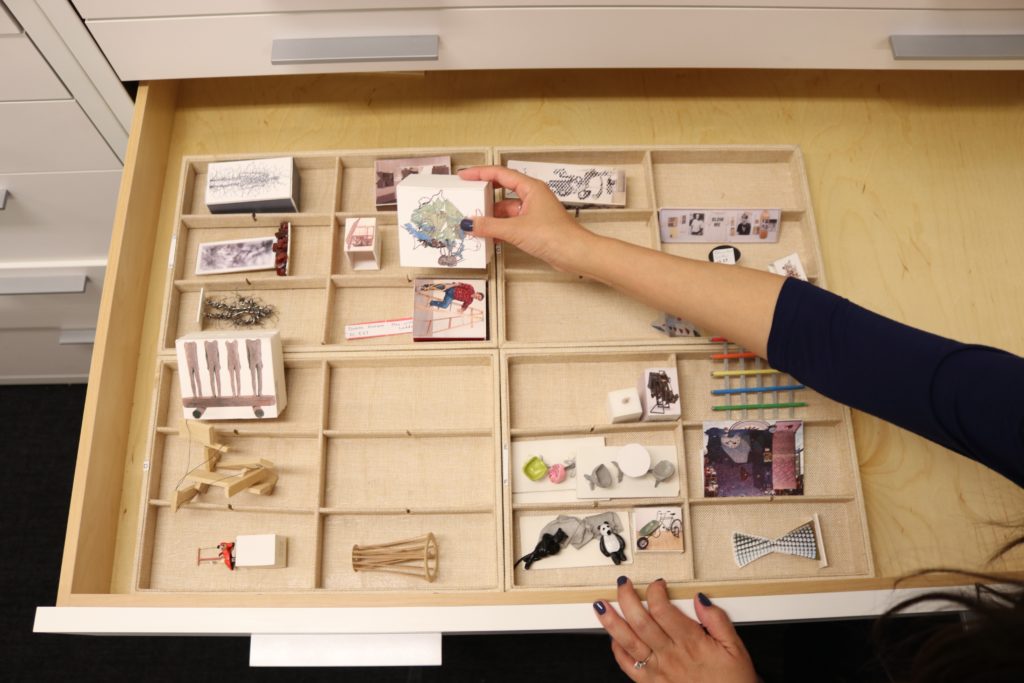
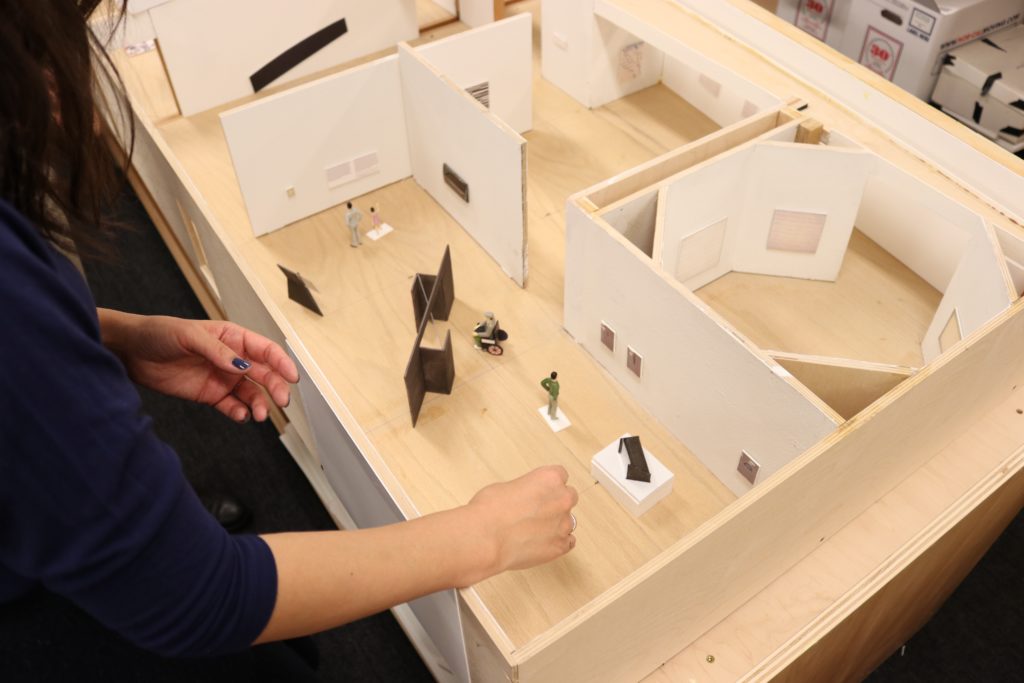


Photos: Adrian Martinez for SFMOMA
After curators and designers agree on the artworks’ final placement, Choi captures the decisions in the software program AutoCAD, creating official blueprints that teams across the museum — installation, curatorial, visitor experience, and publications — use to guide their work.
Even the artists appreciate Choi’s and SFMOMA’s attention to detail. Rachel Harrison, whose work appeared in the last gallery of our recent Matisse/Diebenkorn exhibition, asked to take the maquette of her sculpture Hoarders (2012) back to her studio as a keepsake. Choi remarks, “I was totally flattered. It was completely unexpected, and I felt so honored.”
This article originally appeared in the Fall 2018 SFMOMA Member magazine. Kent Roberts, beloved SFMOMA staff member and artist, passed away in September 2019.